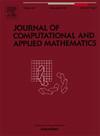自定进度、教师辅助的SQL教学方法
IF 2.6
2区 数学
Q1 MATHEMATICS, APPLIED
Journal of Computational and Applied Mathematics
Pub Date : 2025-06-14
DOI:10.1016/j.cam.2025.116837
引用次数: 0
摘要
本文提出了一种既适合高校课堂教学,又适合异步远程教学的结构化查询语言(SQL)教学方法。学生们不是被动地坐着听讲座,而是按照自己的节奏,通过小教程、例子、练习、实践任务和小测验来学习。他们的工作由一个基于人工智能的软件平台实时检查,该平台还提供即时的个性化自适应指导。学生们必须证明自己掌握了每一个概念,才能开始下一个概念。通过这种方式,他们100%的时间都是活跃的,并且比传统教学得到更多的实践。教师不讲课,这允许他或她与学生单独互动。事实证明,与听课相比,学生们不仅喜欢与老师一对一的互动,而且他们也从中受益匪浅。在本文中,我们提供了教学方法的简要概述,然后我们将重点放在SQL查询的自动服务器端分析和评分上,这是自定进度SQL课程的基石。我们为各种类型的查询介绍了许多基于python的SQL分析器,并提供了三个实时SQL赋值的链接,供读者进行实验。我们的SQLgrader库可以在Github上获得开源许可。本文章由计算机程序翻译,如有差异,请以英文原文为准。
Self-paced, instructor-assisted approach to teaching SQL
We present a novel approach to teaching Structured Query Language (SQL), which is suitable for both college classroom environment and asynchronous remote instruction. Instead of sitting passively and listening to a lecture, students work at their own pace through bite-sized tutorials, examples, exercises, practical tasks, and quizzes. Their work is checked in real time by an AI-based software platform which also provides instant personalized adaptive guidance. Students must prove mastery of each concept before being allowed to tackle the next one. In this way, they are active 100% of the time, and get much more hands-on practice than in traditional instruction. The instructor does not lecture, which allows him or her to interact with students individually. It turns out that students not only enjoy the one-to-one interaction with their instructor much more than listening to lectures, but they also greatly benefit from it. In this paper we provide a concise overview of the teaching method, and then we focus on automated server-side analysis and grading of SQL queries, which is the cornerstone of the self-paced SQL course. We introduce a number of Python-based SQL analyzers for various types of queries, and present links to three live SQL assignments for the reader to experiment with. Our SQLgrader library is available on Github under an open source license.
求助全文
通过发布文献求助,成功后即可免费获取论文全文。
去求助
来源期刊
CiteScore
5.40
自引率
4.20%
发文量
437
审稿时长
3.0 months
期刊介绍:
The Journal of Computational and Applied Mathematics publishes original papers of high scientific value in all areas of computational and applied mathematics. The main interest of the Journal is in papers that describe and analyze new computational techniques for solving scientific or engineering problems. Also the improved analysis, including the effectiveness and applicability, of existing methods and algorithms is of importance. The computational efficiency (e.g. the convergence, stability, accuracy, ...) should be proved and illustrated by nontrivial numerical examples. Papers describing only variants of existing methods, without adding significant new computational properties are not of interest.
The audience consists of: applied mathematicians, numerical analysts, computational scientists and engineers.

 求助内容:
求助内容: 应助结果提醒方式:
应助结果提醒方式:


